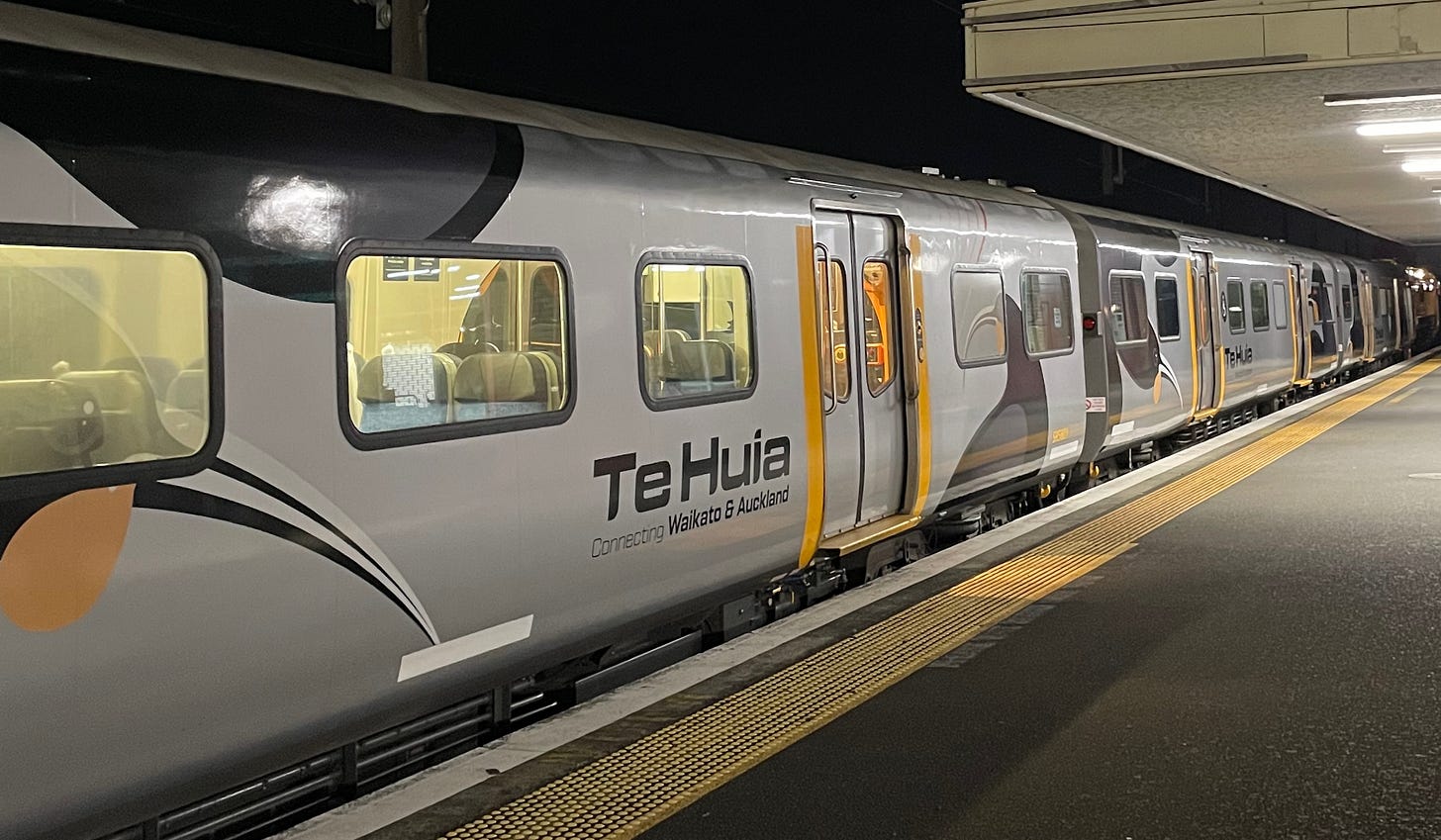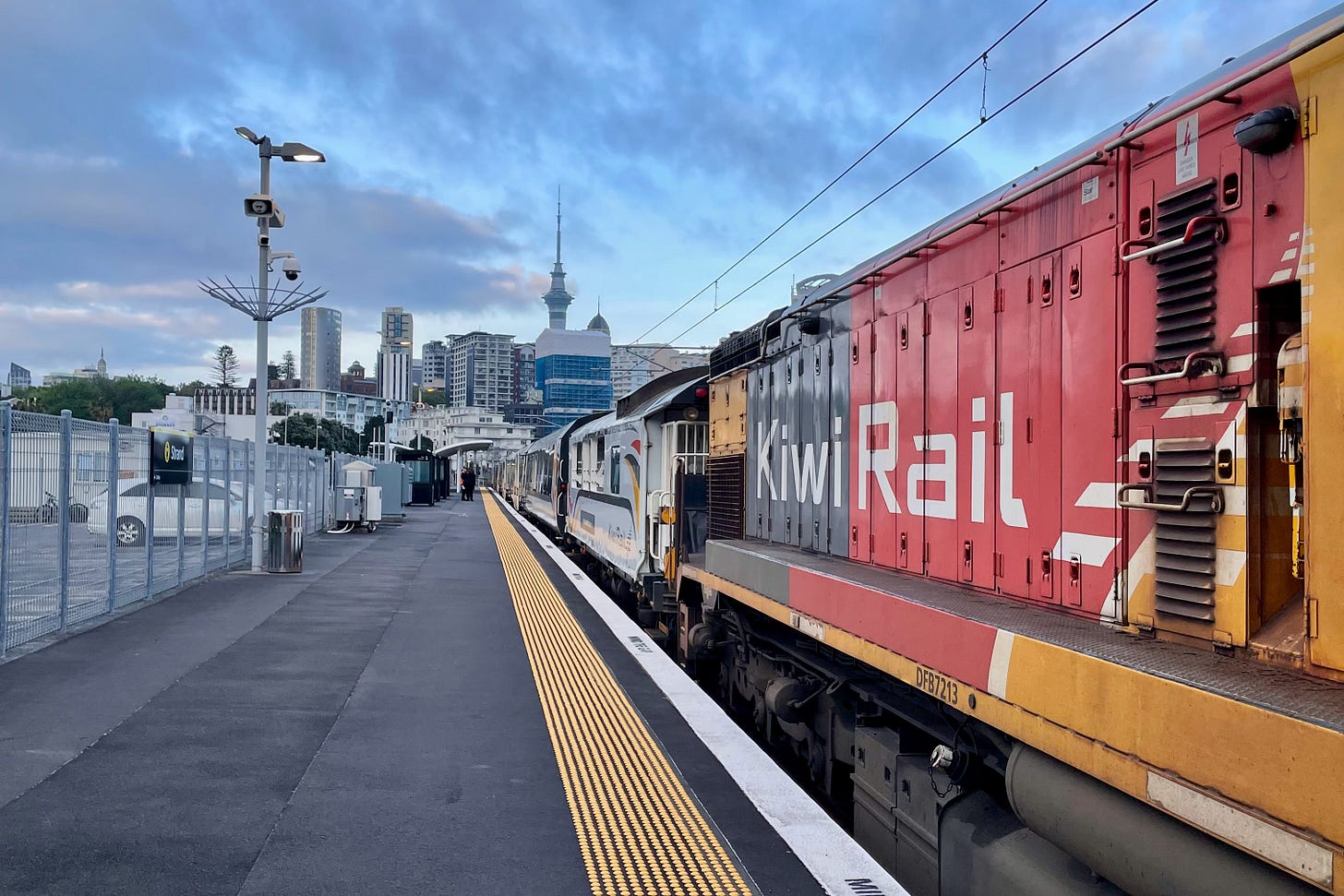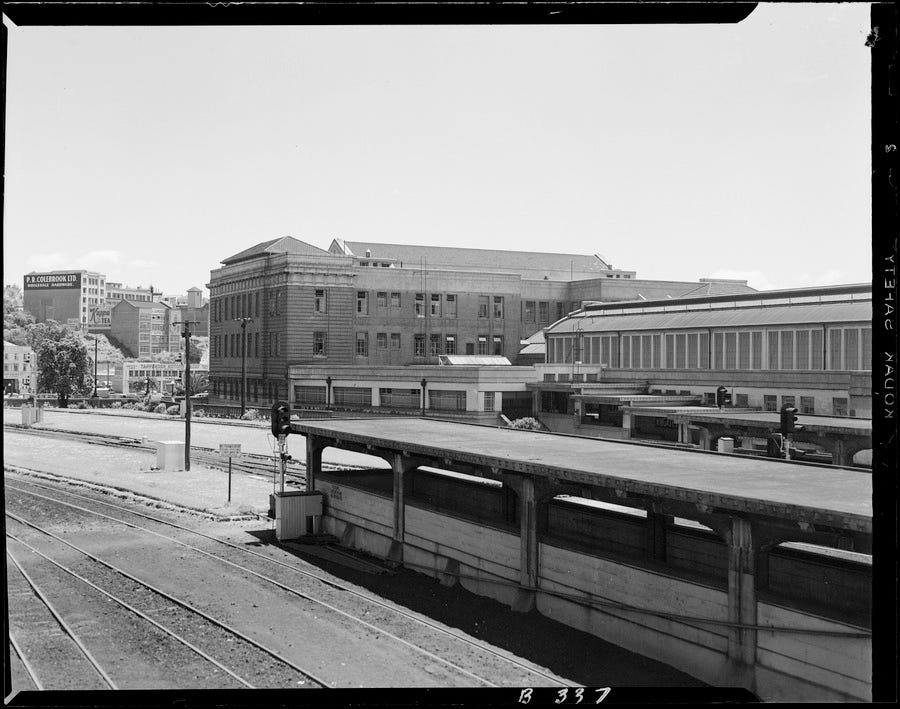Te Huia - the good news and the bad news
Key decisions were taken on Te Huia on Friday 26th May 2023. There's good news and bad news for regional rail in the Upper North Island. Read on for the detail...
Te Huia has featured in the news quite a bit this week with some more positive than usual coverage. This has mostly focused on how it has progressively built up patronage in spite of challenges with infrequent service, contending with the Auckland Rail Network Rebuild and inconvenient terminal stations, distant from Hamilton and Auckland city centres.
So it was with great interest that the meatiest item on the agenda for the inaugural meeting of the Waikato Regional Council Public Transport Subcommittee were key decisions relating to the Te Huia train between Hamilton and Auckland. These decisions have implications for the Waikato and the Bay of Plenty. In this, there is some good news and some bad news.
Two key decisions were made. One is bad news, the other is very good news. Firstly, the bad news. FYI, the relevant staff recommendations, adopted by the committee, are as follows:
The ongoing Strand-ing of Te Huia
In spite of the City Rail Link significantly simplifying and increasing the capacity of the centre of the Auckland rail network, there is apparently no ability for even the current four Te Huia trips per day (two in each direction) to have, post City Rail Link, a station stop in the urban core directly connected to the Auckland urban network. This includes no connection to City Rail Link stations at Maungawhau, Karanga-a-Hape, Te Waihorotiu and Waitematā. The plan, apparently, is for Te Huia to continue to start and finish at Auckland Strand Station, a considerable distance from the heart of the city, with poor, indirect and illegible bus, bike and pedestrian connections to the city centre. There is a vague promise of unspecified cosmetic improvements to Auckland Strand Station to enhance the “customer experience.” Based on the current state of the station, that would be starting from an extremely low base for the regional and long-distance train station for a city of 1.7 million people, a third of Aotearoa’s entire population.
The supreme irony of Auckland Strand is that it is in fact platform 7 of the former Auckland Railway Station, in existence from 1930 to 2003. The closure of this station and the opening of Waitematā/ Britomart Station in the heart of the city centre in 2003 was a key catalyst for Auckland’s spectacular rail revival of the early 21st Century with Auckland rail patronage rising from 2.5 million in 2003 to nearly 22 million just prior to the pandemic in 2019.
Even more ironic is that platform seven is actually connected to the old Auckland Station by now concreted over underpasses which, if they were able to be reused, would considerably reduce the walking distance to the city centre. This all means that for regional and long-distance train customers to and from Auckland, the “customer experience” is much worse at Auckland Strand Station than at the former Auckland Station to which it used to be connected.
But there is a faint glimmer of hope in this sorry saga of regional and long-distance trains continuing to be shoved to the back of beyond in Aotearoa’s largest city. Waitematā/ Britomart Station was opened in 2003 as one of the only diesel underground train stations anywhere but was de-dieselised upon the completion of the electrification of the Auckland urban rail network in 2015. But the Government’s recent announcement of the further rail electrification, including between Pukekohe and Hamilton and Hamilton to Tauranga, potentially enables the two platforms at Waitematā/ Britomart not used by City Rail Link to be used by electric regional and long-distance trains post-City Rail Link.
And now for the good news…
Now that we have the bad news out of the way, let’s get to the good news. It comes in this Waikato Regional Council staff recommendation, adopted by the committee.
“Waikato Regional Council and Waka Kotahi NZ Transport Agency
submit a Detailed Business Case for the Te Huia Rolling Stock Replacement,
to commence within the 2023-24 financial year subject to funding availability
or otherwise funded in year one of the 2024-34 Long Term Plan.”
This follows on directly from the announcement by the New Zealand Government in late April of funding for a fleet of new tri-mode trains for the Lower North Island to replace ageing Capital Connection and Wairarapa Line rolling stock and significantly improve train services.
What this means is that Waikato Regional Council wants to get underway with work on replacement rolling stock providing a long-term solution for Te Huia in the coming financial year which starts on 1st July 2023. This could mean the ability to add on to the Lower North Island rolling stock order to provide a sustainable long-term passenger rail solution for the Upper North Island. As the planned fleet is tri-mode, it means that it can run on electricity in electrified sections of the network and on battery or diesel as sections of track are being electrified. Ironically, Te Huia being diesel means that it can continue to run in 2024 during the Auckland Rail Network Rebuild closures of the Southern Line south of Ōtāhuhu.
This new rolling stock gives the opportunity to address many of the issues necessitated by Te Huia using refurbished rolling stock. This includes level boarding and more space for people on bikes and in wheelchairs, helping to provide a dignified inclusive travel experience for people of all ages and abilities.
In further good news, there are indications from within KiwiRail that planning work is already getting underway for the design of rail electrification extension as part of the Detailed Business Case process. On top of that, it would seem logical for the Upper North Island to be the starting point for this as closing the electrification gap between Pukekohe (post-2024) and Hamilton means continuous electrification from Auckland to Palmerston North. This would be logically followed by electrification of the East Coast Main Trunk Line from Hamilton to Tauranga, given the very high volume of freight (and hopefully future passenger rail) on this line.
And on top of that, the investigation into additional station stops for Te Huia at Tūākau, Pōkeno and Te Kauwhata is due to wrap up in June and be reported to the next meeting of the Public Transport Subcommittee at its next meeting in September. We will be tracking this with great interest as additional station stops in high-growth areas in the Upper North Waikato will help secure Te Huia’s long-term future.
Te Huia continuing to have its Auckland terminus at the amenity- and location-challenged Auckland Strand Station is far from optimal. But there is potentially better news in the medium-term for an enduring solution for electrified passenger rail in the Upper North Island. And it is great to see the ongoing strong political support from the Waikato Region for passenger rail. They have done some hard yards to get Te Huia to where it is today and deserve credit for fortitude and stamina against some strong headwinds.










Great news on balance! Pray that Simeon Brown doesn’t get his hands on the transport portfolio …
Yes, that is good news that Waikato Regional Council and Waka Kotahi NZ Transport Agency
submit a Detailed Business Case for the Te Huia Rolling Stock Replacement,
to commence within the 2023-24 financial year subject to funding availability
or otherwise funded in year one of the 2024-34 Long Term Plan.
This follows on directly from the announcement by the New Zealand Government in late April of funding for a fleet of new tri-mode trains for the Lower North Island to replace ageing Capital Connection and Wairarapa Line rolling stock and significantly improve train services.